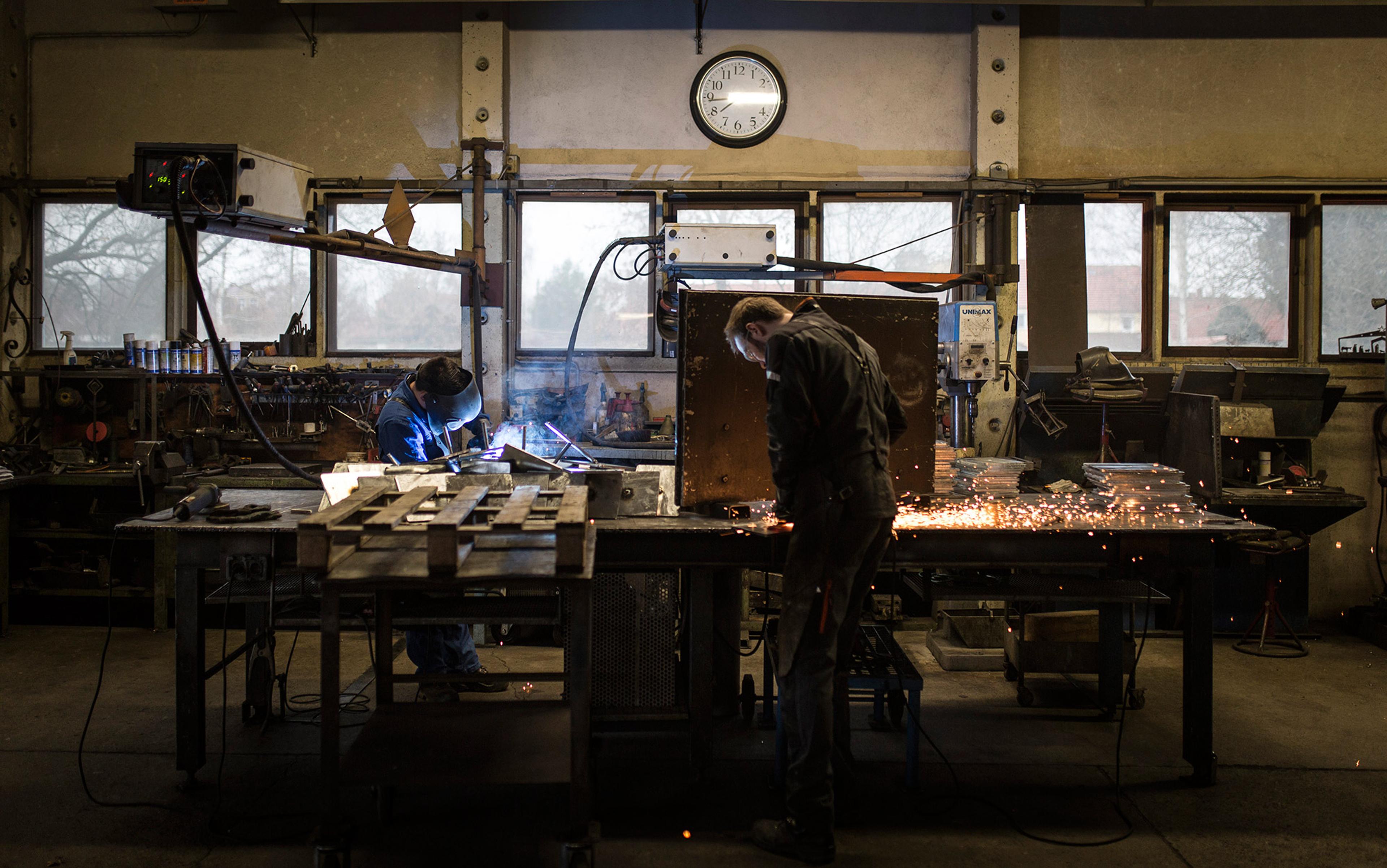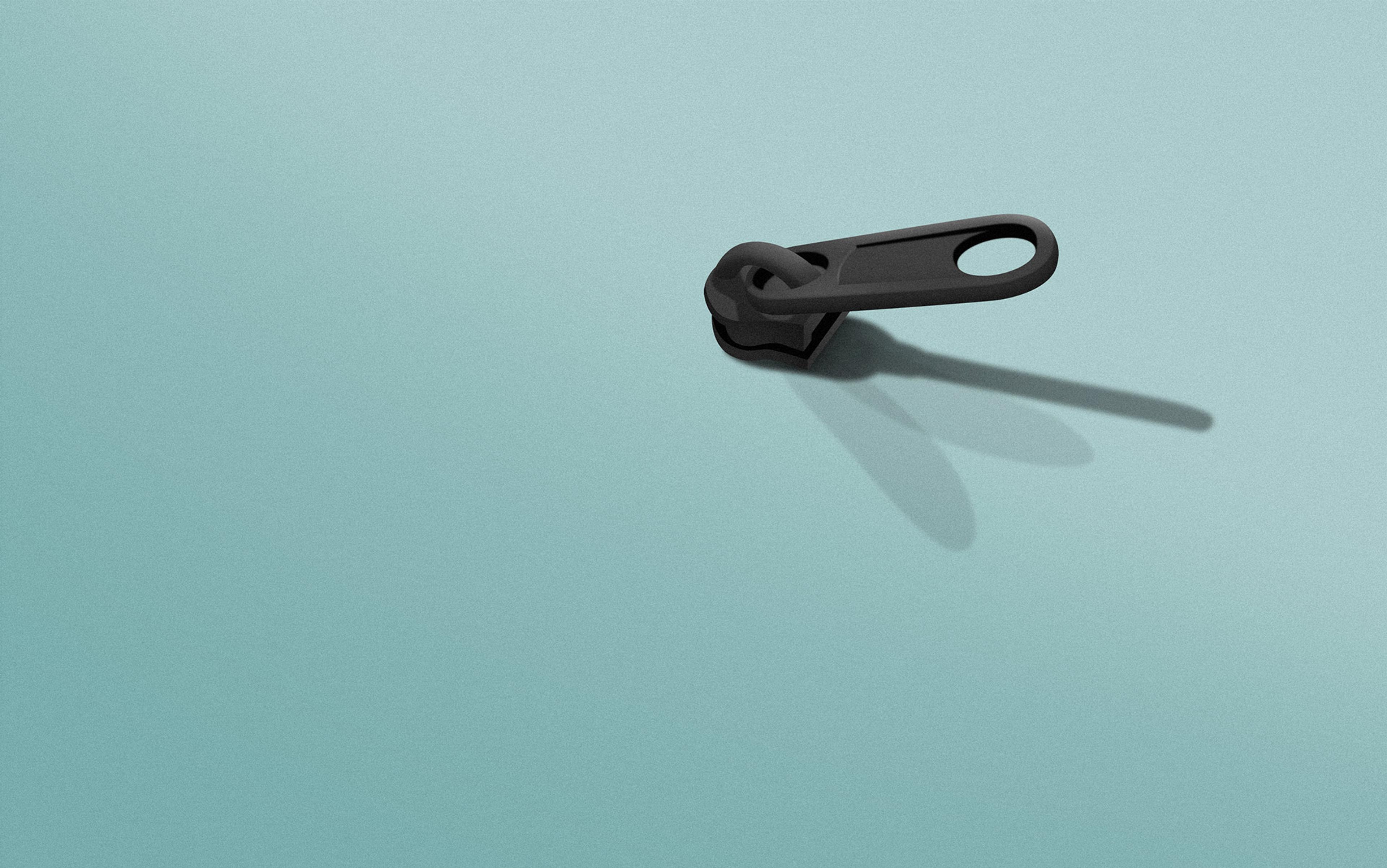Are you sitting comfortably? If so, how much do you know about the chair that’s holding you off the ground – what it’s made from, and what its production process looked like? Where it was made, and by whom? Or go deeper: how were the materials used to make the chair extracted from the planet? Most people will find it difficult to answer these basic questions. The object cradling your body remains, in many ways, mysterious to you.
Quite probably, you are surrounded by many things of which you know next to nothing – among them, the device on which you are reading these words. Most of us live in a state of general ignorance about our physical surroundings. It’s not our fault; centuries of technological sophistication and global commerce have distanced most of us from making physical things, and even from seeing or knowing how they are made. But the slow and pervasive separation of people from knowledge of the material world brings with it a serious problem.
Until about a century ago, most people knew a great deal about their immediate material world. Fewer and fewer do today, as commodities circulate with ever greater speed over greater distances. Because of the sheer complexity of contemporary production, even the people who do have professional responsibility for making things – the engineers and factory workers and chemists among us – tend to be specialists. Deepened knowledge usually also means narrowed knowledge. This tends to obscure awareness of the extended production chains through which materials, tools, components and packaging are sourced. Nobody – not an assembly-line worker, not a CEO – has a comprehensive vantage point. It is partly a problem of scale: the wider the view comes, the harder it is to see clearly what’s close at hand.
In effect, we are living in a state of perpetual remote control. As Carl Miller argues in his book The Death of the Gods (2018), algorithms have taken over many day-to-day procedures. These algorithms are themselves driven by algorithms, in a cascade of interconnected calculation. Such automated decisionmaking is extremely efficient, but it has contributed to a crisis of accountability. If no one understands what is really happening, how can anyone be held responsible? This lack of transparency gives rise to a range of ethical dilemmas, chief among them our inability to address climate change, due in part to prevalent psychological separation from the processes of extraction, manufacture and disposal. For the same reasons, corporations take little responsibility for their outsourced workers. Scale and distance present consumers with related challenges: if you don’t know the people who were responsible for making the things in your life (and indeed, cannot imagine what their own lives might be like), it is difficult to find common cause with them. This gap between producers and consumers leads to a crack in the social fabric, where weeds of distrust and hatred can grow. Like any tool, technology in itself is not a bad thing. But the more we trust it to be the binding agent for our society, the more fragmented we seem to become.
So what can be done about it? I have a modest proposal: let’s cultivate our material intelligence. Let’s try to recover our literacy in the ways of the physical world, just as someone who reads English can understand this sentence, and someone good with numbers can draw up a balanced budget. If we can anchor ourselves in this way, attending closely to the objects near to us, we might just be able to regain our bearings, and take greater responsibility for our actions.
Though one does not need to be a maker to have material intelligence, it certainly helps. Knowledge of one craft or trade can inform an understanding of many others. And if you’re not particularly handy (I am not, myself) the next best thing is to watch someone who is. Experiencing a craftsperson at work, in person, is an incredible experience: it gives an immediate appreciation of the intimate choreography that real skill involves. It also cultivates curiosity about the material world in general, the habit of wondering how pencils or pillows were made, and by whom. This intuitive interest in materiality can help, in turn, to develop a healthy appreciation for human ingenuity. So much know-how can be embedded within even an apparently simple thing.
Material intelligence feels elusive, in part, because of practical detachment from the environment. It is also difficult to measure. When trying to describe this dimension of our awareness, people often use the phrase ‘tacit knowledge’, the understanding that resides in the body. There is no way to put workmanship fully into words. In this sense, it is quite different from other, better-recognised forms of intelligence. If you have ever taken an IQ test, you will remember that the questions are language-based, geometrical and mathematical puzzles, such as: ‘Mary, who is 16 years old, is four times as old as her brother. How old will Mary be when she is twice as old as her brother?’ (That’s right: 24.) In his bestseller Emotional Intelligence (1995), Daniel Goleman popularised the idea he borrowed from the psychologists John Mayer and Peter Salovey. Emotional intelligence (EQ) then became a favoured term in business schools and sociology departments, which developed means to measure it. Researchers made some satisfying discoveries; for example, it turns out that when solving a wide range of puzzles in a team setting, the average EQ of the team is more predictive of success than the average IQ, or the highest IQ score of any individual team member. Such experiments seem to prove that we would all benefit if we could only get along.
Social structure itself tells of our increasing alienation from the material world. The know-how of material trades – farming, car repair, house construction, hairdressing – does not have the same standing as immaterial pursuits such as law, insurance or finance. Why? Not only because they can’t be objectively tested: these skills might be hard to set down on paper, or quantified, but proof of material intelligence is easy enough to see. Nor is it because of difficulty level. If a Wall Street trader and a tailor were to switch places for a day, neither would acquit themselves well; and while MBA programmes usually last two years, the traditional period of apprenticeship for a bespoke tailor is seven. Nor is the higher respect paid to white-collar workers based on some fair-minded calculation of benefit to society. If that were true, many corporate executives would be giving away money, not raking it in.
The machines that make mass production possible are themselves extraordinary feats of craftsmanship
The hierarchical arrangement of occupations, with people who work with their hands gathered mostly at the bottom, results simply from the exercise of power. It’s the result of a deep historical process, based in class conflict, and also involving prejudices based on gender and ethnicity. For the same reason, painting and architecture, historically practised by well-to-do white men, enjoy higher cultural status as ‘art’ compared to creative pursuits practised by pretty much everyone else, which sit lower on the status ladder as ‘craft’. Measuring intelligence itself is part of the story: its quantitative and presumptively objective rendering preoccupied the eugenics movement. The overrating of technical and linguistic aptitude and the undervaluation of manual skills – the fact that we apply the word ‘smart’ to phones and appliances more readily than to our fellow humans – is not natural or right. It’s an inheritance from past injustice.
To redress these wrongs, it’s important not just to recognise material intelligence, but also to understand it in general terms, as a whole. Skilled professions are often very specialised, and that can obscure connections between them. Craft is often contrasted to industry, for example. To some extent, this opposition makes sense. Artisanal production has often been understood as a remedy for the social ills that first arose during the industrial revolution: the grinding, subdivided labour of British mill towns prompted nostalgia for small country workshops. Yet thinking of craft and industry as opposites also leads to misperception. Whatever the scale, production always requires an understanding of materials, tools and processes somewhere along the line. The machines that make mass production possible, which spelled the end of so many traditional crafts, are themselves extraordinary feats of craftsmanship.
Material intelligence plays a notable role in science, too. It is easy enough to caricature artisans as instinctive, and lab technicians as analytical. In fact, craft-makers possess extraordinary reserves of technical knowledge, while experimental scientists often talk about the importance of having ‘good hands’. The same goes for medicine. Caring for the human body demands much more than a knowledge of anatomy and chemistry; it’s a tactile business. Doctors and nurses routinely use touch to rapidly and accurately develop diagnosis. And as for surgeons, show me one without material intelligence, and I’ll say: thanks, but I’ll have my operation elsewhere.
Material intelligence also crosses over the conventional divide between production and consumption. Makers and users can equally appreciate the warmth and grain of wood, the cool hardness of metal, the pliability of rubber. Just as skilled makers anticipate user needs and manage reactions to their work, an attentive user can imaginatively reconstruct the way that something was made. Ideally, an object serves as a bridge between these different perspectives. So material intelligence is shared across walks of life; it is a type of knowledge both wide and deep. Our tendency to chop it up into parts – craft versus industry, art versus science, producer versus consumer – is a pernicious and artificial habit that obscures the common cause of humanity.
Let’s return for a moment to the chair that you’re sitting in. It’s as good a point of departure as any for an exploration of the material world. How would you find out about it, if you wanted to? Thoughts turn first to the internet, of course – just Google it. Many other types of information (celebrity birthdays, nuanced discussions of long-ago military campaigns, full-length episodes of Scooby-Doo) are available at a moment’s notice. But it turns out to be very difficult, online, to find even basic information about a given physical thing. The incentive of manufacturers to keep their production processes private partly explains the silence. But counterintuitively, it’s also because of the conceptual depth of material things.
The American artist Joseph Kosuth’s work One and Three Chairs (1965) serves as a good means of thinking this through. It seems simple at first: just a chair, flanked on one side by a photograph showing the same chair and, on the other, a dictionary definition of the word ‘chair’. It exemplifies the stance that Kosuth took in his essay ‘Art After Philosophy’ (1969), in which he claimed that language-based thinking had exhausted itself. Art, Kosuth thought, was the best way to make further incursions into theoretical understanding. It could reach beyond language, and communicate the ‘unsayable’. The trajectory in the 20th century, Kosuth wrote, was toward the ‘end of philosophy and the beginning of art’.
Unsurprisingly, professional philosophers did not agree, but even so Kosuth’s One and Three Chairs offers a valuable thought experiment. First, as the work’s title suggests, the arrangement might be either one thing seen three ways, or three utterly dissimilar things, bound together through the complex workings of language and representation. The three expressions of chairness conform to a classic tripartite division in semiotics: first, we have the referent (the chair itself); second, an arbitrary sign (the word ‘chair’); and third, an index (the photo, which mechanically reproduces the chair). It is also evident that the evenly weighted triad of one-and-three can easily be broken down into other structures: two flat things and an object; two things that are particular (this individual chair and its photo), and one prescriptive (a definition of chairs in general).
One might also speculate on the cultural meaning latent in the photograph, which has the deadpan, straight-on composition of a mug shot. Even the dictionary entry has its subtleties, the anthropomorphic terminology of seat, back, legs and arms. How capacious is the definition? Is a rock a chair if you sit on it? If not, why not? Who arrives at a definition in the first place: do numerous examples accumulate into the meaning of a word, like arrivals at a party? Or does the concept precede the exemplars, imposing itself on them and giving them meaning?
Even if you could somehow translate a chair’s atoms into data points, would that get you to the important stuff?
One and Three Chairs is Kosuth’s best-known work, and he was one of the key protagonists of conceptual art. So the work has generated a great deal of discussion, and that was exactly the artist’s intention. He was concerned to question the workings of language and representation. Notice, though, the way that the physical chair takes precedence in the work, standing front and centre. You might even catch yourself referring to the chair in the middle as the ‘real one’. But if you are paying attention, you will wonder just what that means.
Consider: which of Kosuth’s three chairs would occupy the most memory in a computer’s hard drive? The lexicographical chair is about one kilobyte of data. The photograph, in high resolution, would take up perhaps 10 megabytes. But the chair is, in a sense, infinite. How would you capture it? The most exacting digital scan will only map its surface features, and even these only to a certain fidelity. And even if you could somehow translate a chair’s atoms into data points, would that get you to the important stuff? The way your body feels as you sit, right now? The subtle messages about style and identity that a chair transmits to those who look at it? Our most sophisticated means of rendering the physical world into information are overmatched by this one unremarkable, everyday object.
It is comforting that the humblest objects resist the ongoing march of technology into our lives in this way, like still rocks in a swift current. This anchoring quality is part of what makes material intelligence special. Understanding even a simple chair is an experiential matter. Googling it will only get you so far. Material intelligence is not just about compiling information. Treating an object as a point of entry into a production chain might be clarifying, for example; but it will not get you in touch with that thing. Material objects demand an aesthetic response, and a kinaesthetic one too.
I have a favourite coffee mug, which is nothing special. It’s one of those heavy ones that you get in American diners, with a shape like a little nuclear reactor and a satisfyingly chunky C-shaped handle. This design became popular following the Second World War, manufactured by the Victor Company at a factory in New York state previously used to manufacture ceramic insulators for telegraph and power lines. They used the same thick, slip-cast porcelain to make the mug, and a classic was born. That’s a fun fact – but it has little to do with my drinking preferences. When I raise it to my lips each morning, I feel the warmth that’s pervaded the clay, the gentle gloss of the glaze, the round roll of the rim as the coffee flows over. It connects in my mind to other ceramics I have known and loved, in museums and in my kitchen cabinets, sometimes made by friends, other times in factories far away. Every time I use it, I’m situating myself within a broad human fabric.
The pleasure that this mug gives me exemplifies a crucial aspect of material intelligence, and the promise it holds. Like certain other topics – sports, weather and food among them – an interest in objects cuts across demographic lines. Material things can even operate independently of language; they don’t require translation. For this reason, they have often been the advance emissaries of exchange, as when Chinese ceramics poured into Europe in the 17th century. In those days, porcelain vessels decorated with blue dragons prompted a range of responses, from awe and curiosity to envy – including the desire to imitate the imports using domestic materials. Eventually, knockoffs of Chinese blue and white were made all over the world, from Turkey to the Netherlands to Philadelphia. Did the copying involve economic competition and blatant exoticism? Sure. But fundamentally, this was a process in which cultures encountered and learned about one another.
Pick up a pebble while walking along the beach, and bring it home as a reminder of a day well spent
A similar potential to enhance mutual respect exists today. Just imagine: what if we taught children in primary schools to identify and manipulate a basic lexicon of materials, to understand their properties and potential uses? What if vocational training met with as much respect as academic education? One result might be to enliven us all to the physical world around us. The embrace of such connoisseurship could change the world for the better. This is not the same as encouraging luxury production. ‘Better’, here, does not mean market value. It does not imply rare substances, or extraordinary expenditures of workmanship. It just means an object that feels extraordinarily right to you, as my $7 diner mug does to me. Once I found it, I didn’t need to keep buying coffee cups. I was satisfied.
I try to look for the same sense of resolution, satisfaction, in all the things I buy: the curtains in my house, the leather bag I use to carry my laptop, the jeans I wear as I type these words, and yes, the desk chair in which I’m sitting. I could not have made any of these things myself. It so happens that I met all the people who did, though. The curtain fabric is by the Brooklyn weaver Scott Bodenner; the bag by a leatherworker in Cambridge, England, called Ian Stevens; the jeans by Raleigh Denim, in North Carolina; and the chair by the late Art Carpenter (his real name, believe it or not). I’d vouch for any of them to go to an elementary school and explain what they do. That might help to impart kids with a healthy interest in skill and enterprise, and also a worthwhile set of values: creativity, care and commitment.
None of the things I’ve just described was all that expensive, but I feel I can claim ‘connoisseurship’ of them (in the oldest sense of the word, which comes from the French for knowledge, or awareness). As a museum curator, I found a line of work that brings me into contact with makers, which reminds me of the beauty and vitality of things. But the feeling that I am trying to describe is open to all. And it is instinctive – even if we’re not all in touch with that instinct these days. Reconnecting with it shouldn’t be hard: it can be as simple as picking up a pretty pebble while walking along the beach, in serene solitude or in the company of loved ones, and bringing it home as a reminder of a day well spent. For this purpose, any pebble will do. It takes just a moment to invest it with specialness.
It might sound utopian, but if everyone could extend that same simple attitude to the things in their lives, the benefits would be incalculable. The bad news is that the atomisation of our society is getting worse all the time. The good news is that, though it might appear otherwise, we actually are all in it together – together with one another, and with material things, which can give us purchase in an increasingly disorienting world. We live, day by day, in a torrent of negativity. Often it seems unbridgeable. But objects can be our stepping stones. Recognise them for what they are, and we might just get to the other side.






